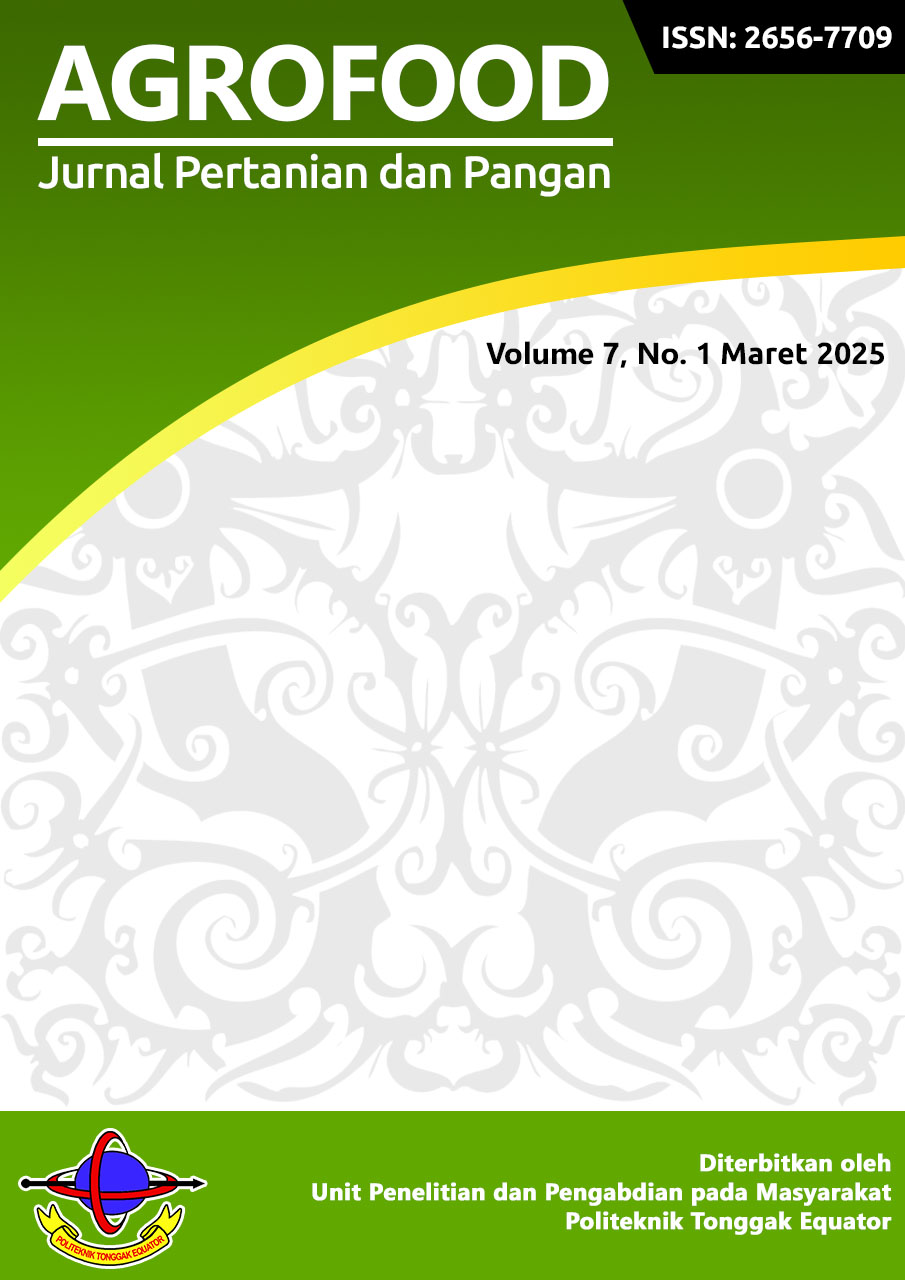Pengaruh Substitusi Tepung Labu Kuning (Cucurbita moschata) pada Kue Cucur terhadap Kadar Air, Tekstur, dan Uji Organoleptik
DOI:
https://doi.org/10.63848/agf.v07n1.5Keywords:
Cucur, Pumpkin flour, Moisture content, texture, and organolepticAbstract
Cucur as one of Indonesia's traditional culinary heritage, the unique characteristic of cucur lies in its distinctive texture, which is crispy on the edges and soft in the middle, as well as its sweet and slightly savory taste. One of the innovative efforts that can be made is to utilize the potential of yellow pumpkin flour as a substitute ingredient in making cucur. The use of yellow pumpkin flour in the formulation of cucur is expected to provide an attractive natural color, improve the texture and taste of cucur. Therefore, this study will examine the substitution formulation of yellow pumpkin flour on the texture and moisture content of cucur, as well as conduct organoleptic tests to determine consumer preferences for the products produced. The substitution of yellow pumpkin flour in the manufacture of cucur significantly affects the chewiness value (chewiness) and moisture content of the product.The decrease in chewiness value was in line with a decrease in moisture content, from 26.3% at the control to 25.6% (P1) and 24.2% (P2). Overall, the results of this study show that the substitution of yellow pumpkin flour has a greater influence on chewiness than springiness. The substitution of 50% (P2) yellow pumpkin flour significantly reduced the chewiness of the product, and based on organopeltic test scores it was higher in aroma and taste parameters than other treatments. Meanwhile, the highest score color parameter was in the control treatment and the highest score texture parameter was in the substitution of 25% yellow pumpkin flour (P1).






